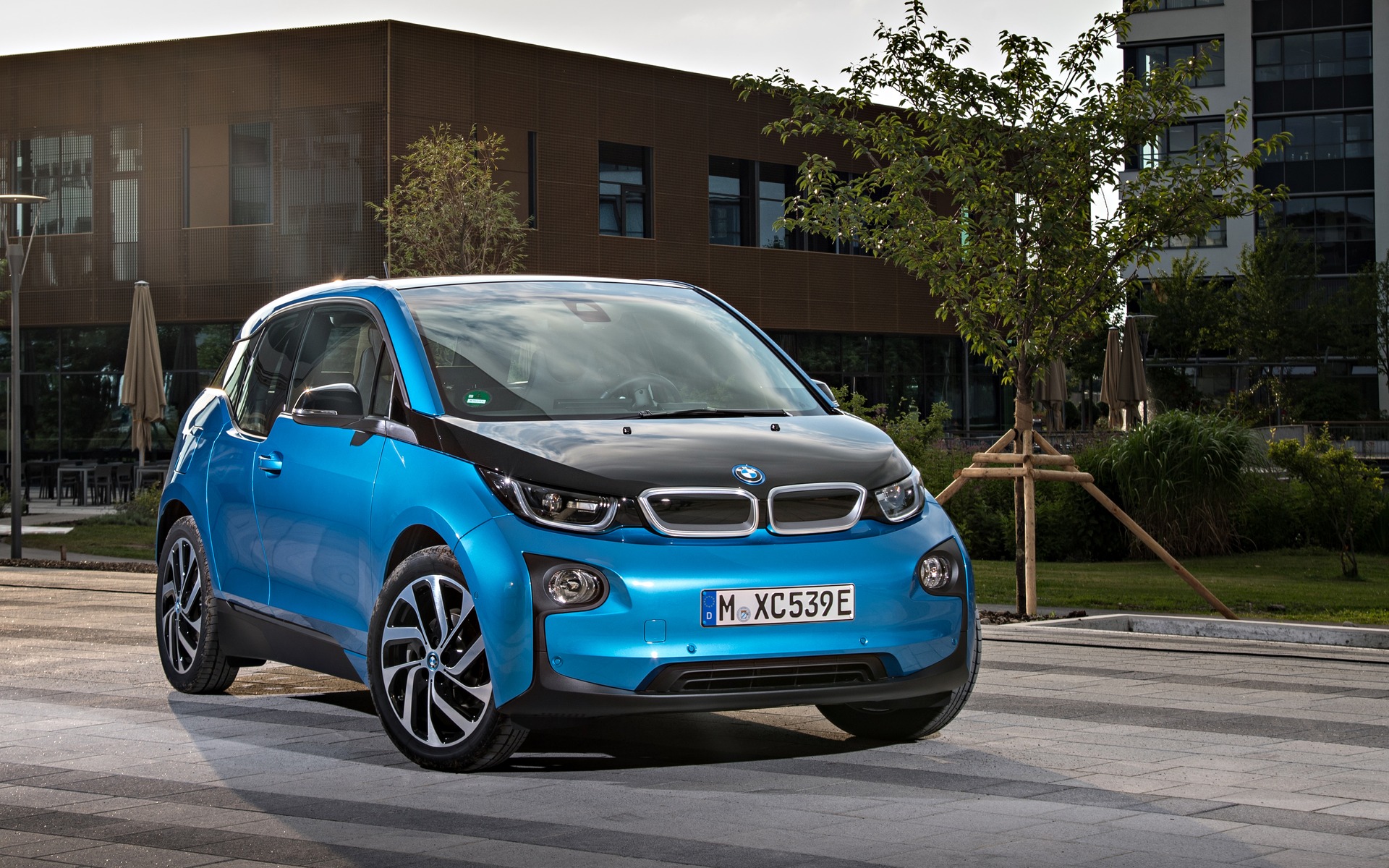BMW i and iPerformance: Exhilaration for Electrification
MONTREAL, Quebec – France and the United Kingdom have recently announced their plans to ban combustion-engine vehicles from their roads starting in 2040, and others should soon follow. While Canada hasn’t established such a plan yet, the Quebec government is taking the lead in our country by requiring automotive manufacturers to offer electrified powertrains in their cars and trucks.
Beginning for the 2018 model year, 3.5% of major carmakers’ total sales in the province must be either fully electric or plug-in hybrid vehicles. For model year 2020, the sales proportion requirement will raise to 6.9%, and by 2025, 15.5%.
The BMW Group invited a bunch of Canadian journalists to Montreal to get them up to speed on the company’s current electrified vehicle line-up, and on what they call their “Electric Future.” Their seven models cover a fairly wide range of vehicle segments.
The newest member of the family is the 2017 MINI Cooper S E Countryman ALL4. It’s powered by a turbocharged, 1.5-litre, three-cylinder engine and an electric motor to deliver a combined output of 221 horsepower and 284 pound-feet or torque. It has an EV driving range of 19 kilometres, and can be fully charged on a 240-volt output in 3.25 hours. The PHEV Countryman has a combined fuel economy rating of 8.6 L/100 km and starts at $43,490 before freight and delivery charges.

Then there’s the 2017 BMW 330e, a PHEV version of the 3 Series sedan. It gets a turbocharged, 2.0-litre four-cylinder engine along with an electric motor for a combined output of 248 hp and 310 lb.-ft. of torque. It has an EV driving range of 23 km and can be fully charged in two hours. The 330e has a combined fuel economy rating of 7.8 L/100 km and starts at $57,200.
The 2018 BMW 530e xDrive sedan gets the same powertrain as the 330e, a turbo 2.0L four-cylinder engine with an electric motor for a combined output of 248 hp and 310 lb.-ft. It has an EV driving range of 24 km and can be fully charged in three hours. The 530e has a combined fuel economy rating of 8.1 L/100 km and starts at $66,900.
The 2018 BMW 740Le xDrive also boasts a turbocharged, 2.0-litre four and an electric motor, this time with a combined output of 322 hp and 369 lb.-ft. It has an EV driving range of 23 km and can be fully charged in three hours. The 740Le has a combined fuel economy rating of 8.8 L/100 km and starts at $110,400.
The 2017 BMW X5 xDrive40e is equipped with a turbo 2.0-litre four-cylinder engine and en electric motor, for a combined output of 308 horsepower and 332 pound-feet of torque. It has an EV driving range 23 km and can by fully charged in three hours. The PHEV X5 has a combined fuel economy rating of 9.9 L/100 km and starts at $74,950.
The fully electric 2017 BMW i3’s output is 170 hp and 184 lb.-ft., and can travel a distance of up to 183 km on a full charge. It can be fully charged in about five hours using a 240-volt outlet. It starts at $48,150, however, about 80% of buyers go for the i3 with Range Extender which, at $52,750, adds a small gasoline engine that acts as a generator for a range of 289 km.
Last but not least, the 2017 BMW i8 boasts a plug-in hybrid powertrain that produces 357 combined horsepower and 420 lb.-ft. of torque. It can cover a distance of up to 19 km in EV mode and can be fully charged in about two hours on a 240-volt outlet. It starts at $149,900.
Do all these models count for the 3.5% sale requirement in Quebec? According to BMW, it doesn’t, at least not yet, although the 530e and the Countryman are just arriving on the market, so it shouldn’t be a tough threshold to reach. In 2016, 2.3% of all BMW and MINI vehicles sold in Canada were EVs and PHEVs. However, 2020 will come around rather quickly, and that 6.9% sales total will be much more difficult to meet.

To further bolster electrified vehicle sales, BMW will be adding a fully electric version of the new-generation X3 crossover and a MINI 3-Door EV to the market in 2019, while the all-electric BMW iNEXT model—the company hinted that it could be a crossover—will arrive in 2021. It won’t be a volume seller, but the 2018 BMW i8 Roadster should soon be unveiled as well. Finally, by 2025, almost every model line will offer an electrified powertrain, and by then, BMW expects their sales to account for between 15% and 25%.
All they need now is for the buying public to embrace these vehicles. And frankly, a little higher EV range in their plug-in hybrid models wouldn’t hurt, either. Even BMW admits the average Canadian drives 47 km every day, so their current crop of PHEVs can only cover about half that distance.
As we all know by now, the governments of Ontario, British Colombia and Quebec are helping out with purchase and lease incentives. The current maximum amounts for each model are as follows:
|
Ontario |
British Columbia |
Quebec |
|
|---|---|---|---|
|
Cooper S E Countryman ALL4 |
$7,730 |
$2,500 |
$4,000 |
|
330e |
$7,730 |
$2,500 |
$4,000 |
|
530e xDrive |
$8,460 |
$2,500 |
$4,000 |
|
740Le xDrive |
$3,000 |
$2,500 |
$0 |
|
X5 xDrive40e |
$8,460 |
$2,500 |
$4,000 |
|
i3 |
$13,000 |
$5,000 |
$8,000 |
|
i8 |
$3,000 |
$0 |
$0 |
In a nutshell, if we’re finally ready to take the EV or PHEV plunge, BMW and MINI has a wide array of models to suit many consumers’ needs.












